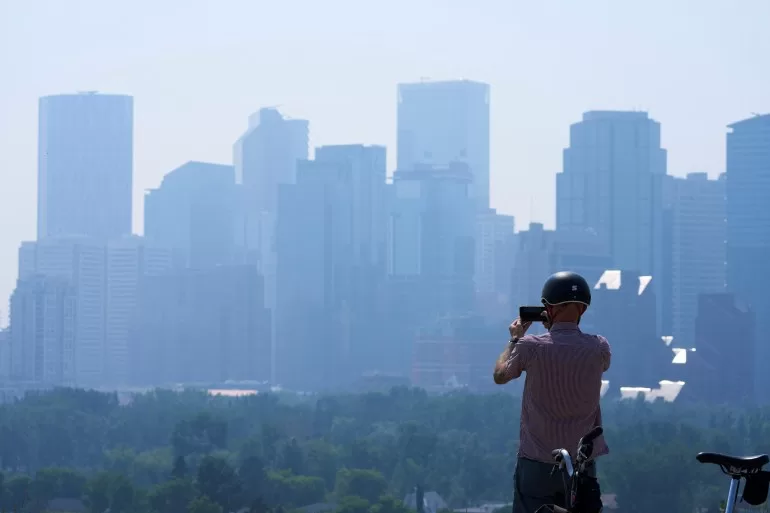Hundreds of out-of-control wildfires are burning across western Canada, putting more communities under evacuation alert and raising concerns about air quality.
Authorities at the BC Wildlife Service said on Wednesday that 430 active wildfires were burning in British Columbia (BC) along with 177 more in neighbouring Alberta, including near Jasper National Park in the Canadian Rockies, one of the country’s most popular tourist destinations.
Canada’s westernmost province, BC was hit by more than 58,000 lightning strikes, according to the provincial wildfire agency, sparking scores of new blazes in forests that are tinder-dry after a three-week heat wave.
Park rangers scoured Jasper National Park in helicopters on Wednesday to look for people still inside despite a mass evacuation aiming to move 25,000 visitors and residents away from two large wildfires.
Searchers looking through the backcountry trails of the park already had picked up 245 people, Parks Canada Incident Commander Katie Ellsworth told reporters.
🔥 Wildfire Update 🔥
The town of Jasper and Jasper National Park have been evacuated due to two active wildfires. The evacuation of the townsite and frontcountry is complete. Evacuations in the backcountry are ongoing and complete in high priority areas.— Jasper National Park, Parks Canada (@JasperNP) July 24, 2024
As many as 15,000 people were believed to be in the park and 10,000 in the neighbouring town of Jasper late Monday when authorities issued an alert asking everyone in the area to evacuate.
“The town of Jasper and Jasper National Park have been evacuated due to two active wildfires,” Jasper National Park said in a social media post.
“The evacuation of the townsite and frontcountry is complete. Evacuations in the backcountry are ongoing and complete in high priority areas,” it said.
“Our highest priorities are to protect the town of Jasper and limit wildfire growth towards the town, Highway 16, and critical infrastructure.”
Ellsworth said the north fire, spanning about 272 hectares (672 acres), is about 5km (three miles) from Jasper while the south fire, about 10,800 hectares (26,600 acres), is some 8km (about five miles) away.
Rain was expected into Thursday but not enough to control the blazes, with no word yet on when people could return, she added.
Photos and videos shared on social media overnight from Monday to Tuesday showed a line of bumper-to-bumper cars and trucks crawling through smoke to try to get out of the area.

Jasper resident Addison McNeill, 24, said she had just moved to the town from Edmonton when she got the stressful alert on Monday night to evacuate.
“Every single person in town was beelining to one exit from about six different routes, and so you get bottleneck, backups and congestion,” she told The Associated Press.
Many communities in western Canada also have been blanketed by thick smoke, including Alberta’s largest city, Calgary, where residents were advised to limit time outdoors.
The Canadian government warned Calgary residents on Wednesday morning that wildfire smoke was causing “very poor air quality and reduced visibility”.
“During heavy smoke conditions, everyone is at risk regardless of their age or health. The fine particles in wildfire smoke pose the main health risk,” it said in a weather advisory.
In April, federal officials said Canada risked another “catastrophic” wildfire season amid higher-than-normal spring and summer temperatures across much of the country.
Last year, the country experienced a record fire season that saw more than 6,600 wildfires burn 15 million hectares (37 million acres).
Experts have said that climate change has extended the Canadian wildfire season and made it easier for blazes to start and spread.
